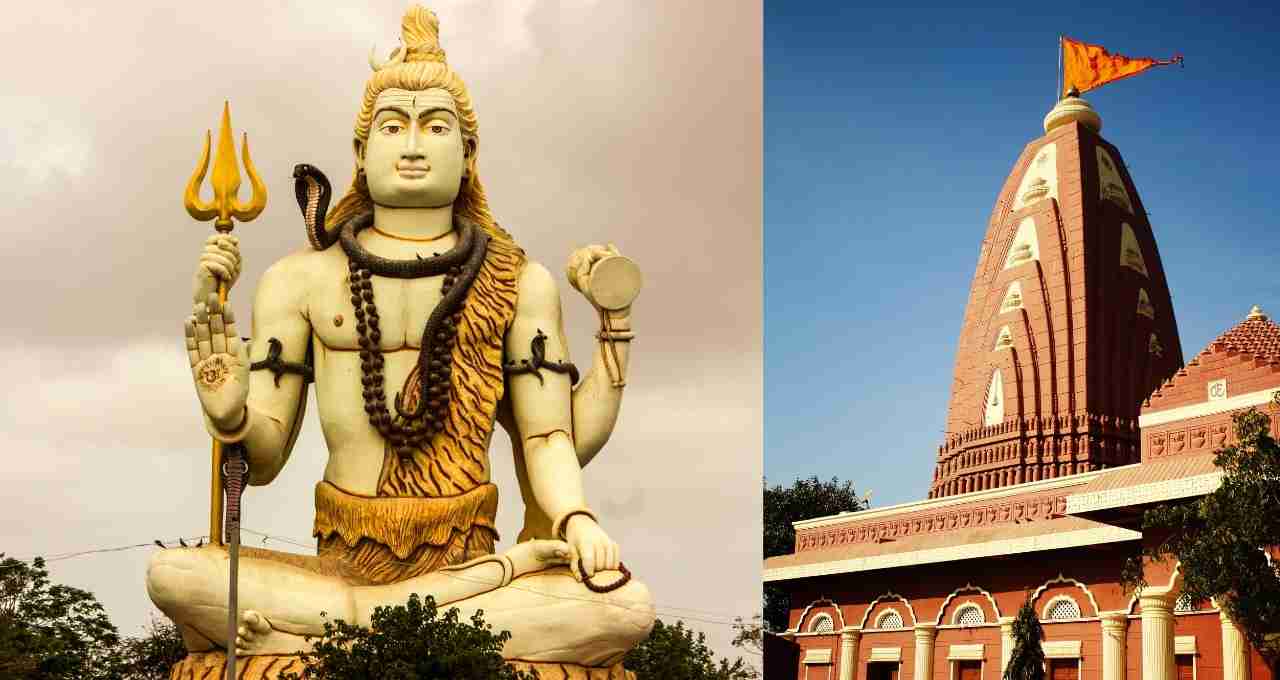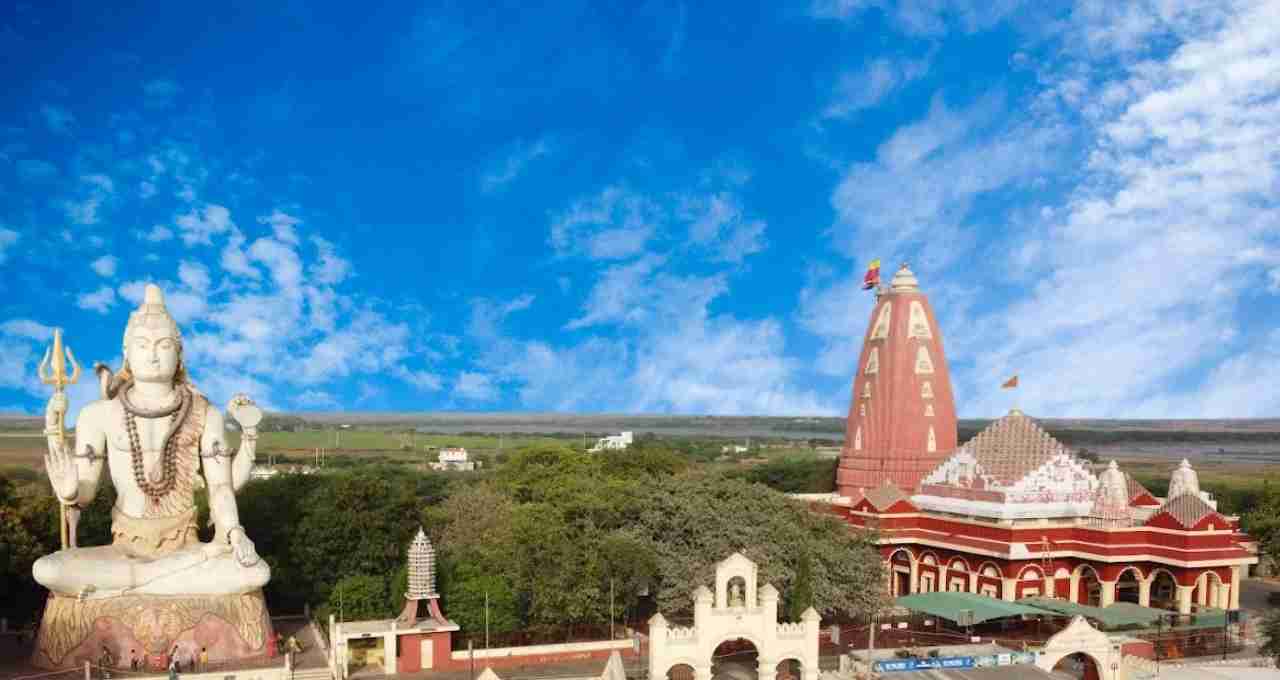Nageshwar Jyotirlinga is one of the twelve sacred abodes of Lord Shiva, located near Dwarka in Gujarat. It is said to be established in Darukavana, where Shiva protected the devotee Supriya. This temple is near the seashore and built according to Vastu Shastra.
Nageshwar Jyotirlinga: Nageshwar Jyotirlinga, one of the twelve Jyotirlingas of Lord Shiva, is situated near the coast of the Arabian Sea in Dwarka, Gujarat. In mythology, it is said to be established in a forest called 'Darukavana' and is considered a self-manifested (Swayambhu) Shivling. There are many historical, mythological, and geographical discrepancies regarding this Jyotirlinga, which makes this place a mysterious heritage.
The Origin Story of Shiva and the Jyotirlinga
According to the Shiva Mahapurana, once Brahma and Vishnu argued about who was superior among them. To resolve this dispute, Lord Shiva manifested himself as a pillar of fire — an infinite column, which was called Jyotirlinga. Brahma went upwards to find the top of the pillar, and Vishnu went downwards. Vishnu accepted the truth that he could not reach the end, while Brahma lied that he had seen the end of the pillar. Thereupon, Lord Shiva appeared and cursed Brahma that he would not have a place in worship. Since then, it has been believed that Jyotirlinga is the infinite form of Shiva, and in memory of these events, 12 sacred Jyotirlingas were established.
Nageshwar Jyotirlinga: An Introduction
The Nageshwar Jyotirlinga is mentioned in the Shivapurana and is known as the tenth Jyotirlinga. This temple is located near Dwarka in Gujarat and is built on the coast of the Arabian Sea. The Shivling situated here is considered very ancient and is said to be a symbol of the unique power of Lord Shiva.
The Tale of Darukavana and the Demon King Daruk

The story associated with Nageshwar Jyotirlinga is described in the Shivapurana. According to this, a demon named Daruk had taken control of a forest called Darukavana. He used to imprison Shiva devotees and torture them. Among them was a Shiva devotee named Supriya. While in captivity, she started chanting Shiva's mantra 'Om Namah Shivaya' and inspired other prisoners as well. By the power of the mantra, Lord Shiva appeared and gave Supriya a divine weapon with which she could face the demons. Eventually, Shiva defeated the demon Daruk and manifested himself there as a Jyotirlinga.
Daruk's wife, Daruka, was a devotee of Shiva and had obtained a boon by performing penance to Goddess Parvati that a forest would arise wherever she went. For this reason, that forest was named Darukavana. Daruka also used her boon to establish a forest within the sea and established a kingdom of demons there.
Nageshwar: The Union of Shiva and Shakti
In this tale, where Shiva appeared as Nageshwar, Goddess Parvati also assumed the form of Nageshwari. This place represents not only the presence of Shiva but also of Shakti (divine feminine energy). This temple is also a source of inspiration for those devotees who do not abandon the remembrance of God even in times of crisis.
Place Among the Jyotirlingas
Nageshwar has an important place in the list of Jyotirlingas. Other temples included in the twelve Jyotirlingas are:
- Somnath (Gujarat)
- Mallikarjuna (Andhra Pradesh)
- Mahakaleshwar (Madhya Pradesh)
- Omkareshwar (Madhya Pradesh)
- Kedarnath (Uttarakhand)
- Bhimashankar (Maharashtra)
- Kashi Vishwanath (Uttar Pradesh)
- Triambakeshwar (Maharashtra)
- Vaidyanath (Jharkhand)
- Nageshwar (Gujarat)
- Rameshwaram (Tamil Nadu)
- Grishneshwar (Maharashtra)
Location Dispute: Is the Real Nageshwar in Uttarakhand?

The Shivapurana mentions that Darukavana was located near the western sea, which refers to the present-day Gujarat region. But many scholars believe that 'Darukavana' was actually 'Daruvana' (forest of cedar trees), which is located around the Jageshwar temple in the Almora district of Uttarakhand. Many people also consider the 'Jageshwar' temple there to be the Nageshwar Jyotirlinga.
It is mentioned in the famous text 'Prasadamandanam':
'Himadreruttare Parshve Devadaruvana Param Pavanam Shankarsthanam Tatra Sarve Shivarchitah.'
According to this, the cedar forest located in the northern part of the Himalayas is the supreme abode of Shiva. For this reason, some scholars consider the Jageshwar temple itself as Nageshwar.
Dwarka or Jageshwar: Analysis of Evidence
Although some scriptures give preference to Jageshwar, the Shivapurana mentions a forest located 'Paschime Sagare' — that is, near the western sea. Dwarka, which is located on the western seacoast, matches this description. In addition, Shiva has been worshiped there as Nageshwar for thousands of years. In the 'Dwadash Jyotirlinga Stotra' composed by Shankaracharya, Naganath is also described as 'Yamye' (located in the southern direction). Some scholars also associate it with the Aundh region of Maharashtra.
Architecture and Features of Nageshwar Temple
The architecture of the Nageshwar temple is a wonderful blend of the traditional Shaiva style. The huge Shiva statue, high peaks, and the sanctum made of marble are its features. A tall statue of Lord Shiva is also installed near the temple, which attracts devotees. The temple complex is peaceful, divine, and full of spiritual energy. Millions of devotees come here to visit on the occasion of Sawan month, Mahashivratri, and Shravan Somvar.
Transportation and Accessibility
Nageshwar Temple is located about 17 kilometers away from the city of Dwarka in Gujarat. The nearest railway station is Dwarka and the airport is located in Jamnagar. Buses and taxis of Gujarat State Transport are easily available.
Spiritual Significance
Nageshwar Jyotirlinga is the place where a Shiva devotee did not give up meditating on God even in times of crisis and ultimately revealed Shiva. This place is not only a place of worship, but it is an ideal for all those devotees who maintain devotion even in adverse circumstances.
Nageshwar Jyotirlinga is the embodiment of Shiva's infinity, power, and grace. Whether it is located on the seashore of Dwarka or in the cedar forests of the Himalayas, its main purpose is to awaken devotion, faith, and surrender. This temple is not only important from an architectural point of view but is also a center for spiritual upliftment.















